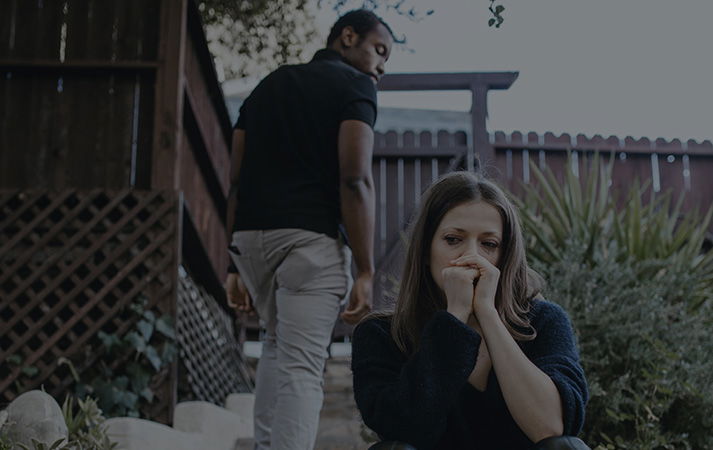Coercive Control: The Hidden Harm of Abuse and Its Lasting Impact on Victims

By Rose Byass
Coercive control is a subtle but dangerous form of abuse that takes away a person’s freedom and independence. Often hidden in plain sight, it can go unnoticed by friends, family, and even the victim themselves, making it one of the most insidious forms of domestic violence. Over time, coercive control creates fear, erodes self-esteem, and entraps victims in relationships where they feel powerless to leave.
What is Coercive Control?
Coercive control refers to a pattern of abusive behaviors that are used to manipulate, dominate, and isolate an individual. While physical violence is often associated with domestic abuse, coercive control can involve a range of non-physical tactics. These include emotional, psychological, financial, and even spiritual abuse. The purpose of coercive control is to assert power and maintain dominance over the victim, creating a toxic environment where the victim is constantly under pressure, fearful, and dependent on the abuser.Contrary to what some might think, non-physical abuse can be just as damaging, if not more so, than physical violence. It chips away at a person's sense of self, making it increasingly difficult for them to seek help or even recognize they are being abused. The impact of coercive control is far-reaching, with consequences that can affect nearly every aspect of a victim's life — from their emotional well-being to their social, cultural, and financial standing.
How Coercive Control Affects Victims
Victims of coercive control often feel like they are walking on eggshells, constantly anticipating the next outburst or manipulation. Their world becomes increasingly narrow, as the abuser seeks to control their every move, choice, and relationship. In many cases, victims don’t even realize they are being abused, especially if the manipulation is subtle or if they’ve been isolated from supportive networks.Some of the harmful effects of coercive control include:
- Emotional and Psychological Damage: Repeated verbal abuse, gaslighting, and emotional manipulation erode the victim’s sense of self-worth and confidence. Over time, they may come to believe that they are worthless, deserving of the abuse, or unable to function independently.
- Social Isolation: The abuser may control who the victim interacts with, limiting their access to supportive relationships or activities. This isolation creates further dependency on the abuser, making it more difficult for the victim to leave or seek help.
- Financial Control: Financial abuse is a common tactic in coercive control. The abuser may restrict the victim’s access to money or control their financial decisions, making it harder for the victim to escape the relationship.
- Physical Health Decline: Coercive control can also impact a victim’s physical well-being. The abuser may limit their access to food, medication, or healthcare, contributing to a decline in physical health.
- Long-Term Impact: Even if the abusive relationship ends, the psychological scars of coercive control can remain long after. Victims may struggle with trust, anxiety, depression, and even post-traumatic stress disorder (PTSD).
Recognising the Signs of Coercive Control
One of the most dangerous aspects of coercive control is that it’s often difficult to spot. The behaviors of the abuser can be subtle and calculated, often hidden from outsiders. Victims may even begin to doubt their own experiences or feel ashamed of their situation.Some of the signs of coercive control include:
- Controlling who the victim sees, where they go, and what they wear.
- Monitoring or tracking their movements and activities.
- Limiting access to finances, medication, food, or exercise.
- Consistently belittling, blaming, or manipulating the victim, causing them to doubt themselves.
- Forcing sexual acts or manipulating intimacy.
- Preventing the victim from practicing their religion or cultural traditions.
- Threatening harm to the victim, their children, or loved ones.
- Using the legal system to manipulate co-parenting or child support arrangements.
The key thing to remember is that coercive control doesn’t always involve overt violence. The abuse can be hidden behind a façade of control disguised as care or concern, making it harder for the victim to recognize that they are being abused.
What Can You Do to Help?
If you suspect that you or someone you know may be experiencing coercive control, it’s important to take the situation seriously. Victims often feel trapped, scared, and confused, making it difficult for them to reach out for help on their own.Here are some steps you can take:
- Reach out confidentially: If you’re concerned about someone, approach them in a safe, private space where they can feel comfortable talking. Avoid confronting the abuser or trying to force them to take action before they are ready.
- Listen with empathy: Let the person know you’re worried about them and that they are not alone. Avoid telling them what to do or making judgments. Instead, offer support and assure them that help is available.
- Provide information: Victims may not know where to turn. Offer information about confidential support services like 1800RESPECT (1800 737 732), where trained professionals can provide advice, resources, and support.
- Be patient: Leaving an abusive relationship, especially one based on coercive control, is complicated and takes time. Victims may need emotional support as they navigate their options and make the decision to seek help.
Conclusion
Coercive control is a harmful, insidious form of abuse that can have devastating effects on its victims. Its long-term impact can destroy self-esteem, independence, and personal freedom. Recognising the signs of coercive control and offering support can be life-changing for those trapped in these harmful dynamics. No one deserves to live in fear or be controlled, and with the right support and resources, victims can find a way out.If you or someone you know is experiencing coercive control, help is available. Don’t hesitate to reach out to support services and take the first step toward breaking free.


